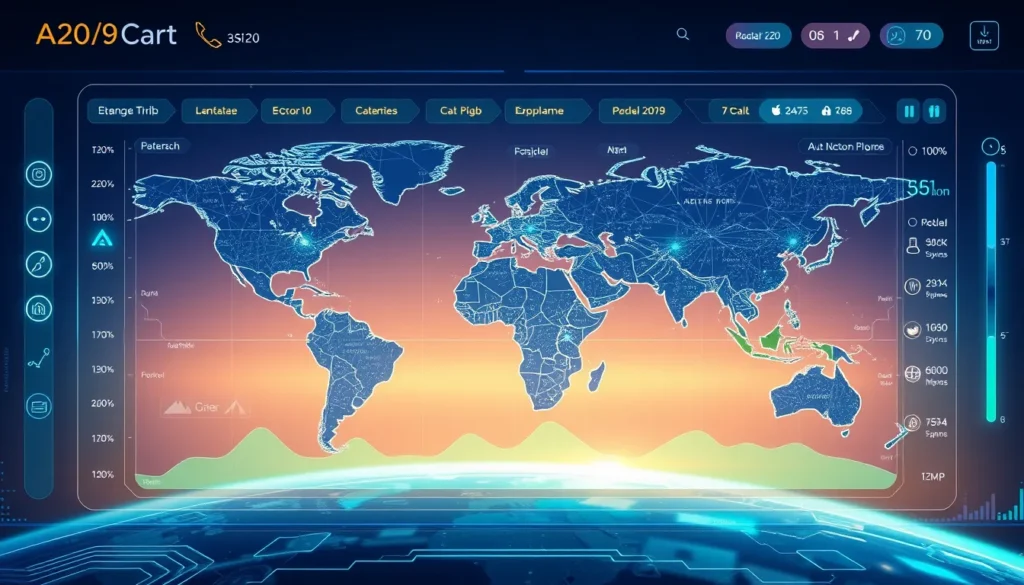Now Reading: Observability in AI: Enhancing AI Agent Ecosystems
-
01
Observability in AI: Enhancing AI Agent Ecosystems
Observability in AI: Enhancing AI Agent Ecosystems

Observability in AI: Enhancing AI Agent Ecosystems
In today’s fast-paced digital world, the complexity of AI agent ecosystems demands a revolutionary approach to system monitoring. Observability in AI is emerging as a critical strategy that not only ensures stability, but also drives performance improvements across industries. By integrating real-time analytics and advanced monitoring, organizations are empowered to proactively manage and optimize complex AI systems. This article delves into the importance of robust AI observability, the benefits of real-time analytics, and the advanced tools that are reshaping the landscape of AI monitoring.
The Importance of Observability in AI Agent Ecosystems
With the increasing sophistication of AI frameworks, traditional monitoring methods are no longer sufficient to manage the continuous data flow and rapid operational changes. Observability in AI goes beyond basic system checks by providing a comprehensive view into the inner workings of AI-driven infrastructures. This not only helps in detecting anomalies at an early stage but also in understanding the behavioural patterns of AI agents.
- Enhanced system reliability through real-time insights.
- Improved decision-making powered by continuous data analysis.
- Early detection of performance bottlenecks to prevent critical failures.
The proactive management of AI ecosystems relies heavily on observability. It transforms observational data into actionable intelligence, ensuring that any performance issues are addressed before escalating into major problems. As AI continues to evolve, this approach is becoming an indispensable tool for organizations keen on maintaining competitive advantage.
How Real-Time Analytics Enhance AI Performance
Real-time analytics play a pivotal role in boosting the performance of AI systems. By processing data as it is generated, companies can instantly flag deviations from standard behavior and quickly react to potential issues. This results in a more resilient and adaptive AI framework, capable of handling unexpected spikes in activity or emergent challenges.
- Immediate detection and remediation of system faults.
- Continual performance tuning based on live data streams.
- Increased transparency that aids in debugging and system optimization.
For example, a real-time analytics platform can monitor thousands of interactions per second, providing a seamless flow of information. This enables companies to maintain operational tempo while ensuring that AI models operate within optimal parameters. In essence, real-time analytics not only enhance performance but also contribute to the longevity and sustainability of the AI ecosystem.
Advanced Monitoring Tools for AI Frameworks
Advanced monitoring tools are at the heart of effective observability in AI. These tools are designed to tackle the intricacies of AI infrastructures—handling everything from data ingestion to complex decision-making processes. By leveraging state-of-the-art software solutions, organizations can continuously track system performance, diagnose issues, and implement improvements.
- Comprehensive dashboards that consolidate metrics across different AI systems.
- Automated alerts for anomaly detection, reducing the mean time to recovery.
- Integration with machine learning algorithms to predict future system behavior.
These tools not only provide diagnostics but also deliver predictive insights that allow teams to anticipate issues before they occur. This seamless integration between monitoring and proactive management makes a measurable difference in maintaining robust AI services.
Proactive Management and the Future of AI Observability
As organizations expand their AI capabilities, the need for proactive management becomes more critical than ever. Instead of relying on reactive maintenance strategies, companies are now turning to approaches that emphasize continuous observation and immediate response.
- Regular system health checks conducted through automated tools.
- Integration of real-time analytics that offers actionable insights.
- Strategic planning based on historical data trends and future projections.
This shift from reactive to proactive management is driven by the recognition that the health of AI frameworks is integral to overall business continuity. With enhanced observability, companies are better equipped to handle disruptions, leading to more resilient operational environments.
Conclusion
In conclusion, the evolving landscape of AI agent ecosystems necessitates a robust observability strategy. Implementing real-time analytics and advanced monitoring tools ensures that complex systems remain efficient, secure, and scalable. The transition to a proactive management model not only safeguards investment but also paves the way for groundbreaking innovations in AI technology. As we look forward to an increasingly interconnected future, embracing observability in AI is key to unlocking the full potential of advanced AI frameworks while maintaining a competitive edge.
By focusing on observability in AI, now is the time for organizations to integrate these best practices into their operational strategies. Not only does this approach improve system performance, it also reinforces the importance of continuous, data-driven insights in the ongoing evolution of AI technologies.
With a commitment to proactive management and real-time analytics, businesses are well-positioned to navigate the challenges of modern AI ecosystems. Ultimately, the robust observability framework will serve as the foundation for innovation and operational excellence, ensuring that AI remains a powerful engine of growth and advancement for years to come.

























